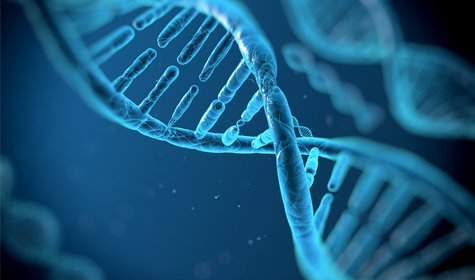Simply put, cancer is caused by mutations to genes within a cell that lead to abnormal cell growth. Finding out what causes that genetic mutation has been the holy grail of medical science for decades. Researchers at the Texas A&M Health Science Center Institute of Biosciences and Technology believe they may have found one of the reasons why these genes mutate and it all has to do with how stem cells talk to each other.
The landmark studies by Texas A&M researchers Fen Wang, Ph.D., and Wallace McKeehan, Ph.D., appear in the Journal of Biological Chemistry and are available here and here. Wang and McKeehan studied a family of proteins that communicate between cells called fibroblast growth factor (FGF). This new research shows that errors in the way FGF is transmitted and received by cells can activate previously dormant stem cells in an organ, which can cause cancer.
“FGF is truly the Cinderella of cancer research. For decades it has been overlooked by big pharmaceutical companies because its role in cells is so complex. Now that we are starting to understand it, everyone is rushing to pay attention to the new star,” said Wang, director of the Texas A&M Center for Cancer and Stem Cell Biology.
The Stem Cell Theory of Cancer
The duo’s research, supported by the National Institutes of Health and Cancer Prevention and Research Institute of Texas, further supports an existing theory that cancer is a stem cell disease. Multiple studies have shown that even within the same lesion, not all cancer cells are the same. Researchers also often find cancerous stem cells within a lesion, and many believe these cells are the key to preventing the initiation and relapse of cancer.
Stem cells have several different roles in human development. Many Americans are familiar with embryonic stem cells, which can become any cell or organ in the body; however, each organ in the body also contains non-embryonic stem cells that are specific to that organ. These organ-specific stem cells control reproduction and growth of the organ through replenishing damaged or aged cells, as well as regeneration of tissues.
Researchers now believe that cancerous stem cells may trigger reproduction and growth of cells within a cancer. These cancerous stem cells lurking within the cancer, under the radar of cancer drugs that target cell proliferation, may underlie the relapse of tumors after surgery of the primary tumor or other cancer treatments. Moreover, without the cancer, stem cells cannot metastasize, or spread.
Some breast and prostate cancer cases have fueled the cancer stem cell theory. Often years after the organ or the cancerous lesions are removed and the patient is declared cancer-free, breast or prostate cancer can return in other organs, indicating the cancer had metastasized before it was originally detected. Cancerous stem cells may be the reason for this.
The Role of FGF in Normal Cell Communication
Nearly every cell in the body expresses the FGF protein, but there are 22 different types, so researchers have struggled to understand their role in cell communication. Until recently it has been a mystery as to how one of the 22 different types of FGF were sent out by cell expressers and taken in by cell receivers.
In their studies released in July, the team traced the life cycle of multiple generations of cells to observe the normal pathways of FGF and what happens when a miscommunication occurs.
“This research is instrumental in establishing the way FGF is normally communicated in cells,” Wang said. “Before we can know what’s abnormal, we must first establish what is normal. It is particularly important to understand how FGF works in normal and cancerous stem cells.”
The Role of FGF In Cancer Stem Cells
Recent research has shown that FGF appears to play a major role in breast and prostate cancer, which is why the duo decided to focus on the protein’s role.
Wang and McKeehan discovered the specific pathways FGF uses to activate stem cells or to keep them dormant. This discovery has major implications for future cancer therapies.
“If we understand how to keep these cells dormant it means that although we may have to live with the presence of cancer stem cells, we can prevent them from causing the cancer to come back,” Wang said. “That’s what we are trying to understand. That is the future of cancer therapy.”
Researchers liken an FGF miscommunication between cells to a game of “telephone.” In this game, FGF miscommunication activates previously dormant stem cells in one organ, and proceeds to miscommunicate with other cells in the same system, enabling the cancerous stem cells to reproduce and spread, impacting other systems in the body.
While Wang and McKeehan’s research is specific to prostate stem cells and prostate cancer, it could have implications for cancers in other organs as well. “Current cancer therapies such as chemotherapy and radiation only target actively proliferating cancer cells,” Wang explained. “If we can control how cancerous stem cells remain dormant and how they are activated, we can cure cancer. The research is still in the very early stages but we have hope.”
Texas A&M Health Science Center is Transforming Health through innovative research, education and service in dentistry, medicine, nursing, pharmacy, public health and medical sciences. Original article: http://news.tamhsc.edu/?post=can-stem-cells-cause-and-cure-cancer

